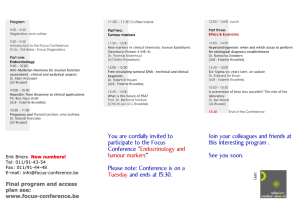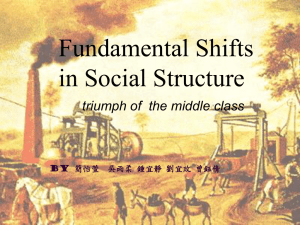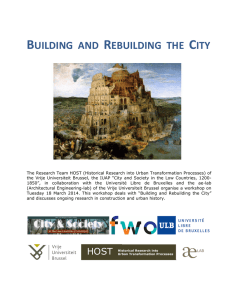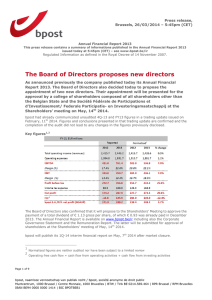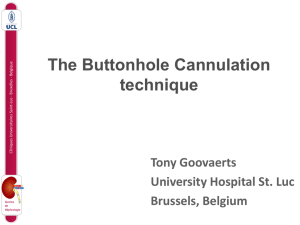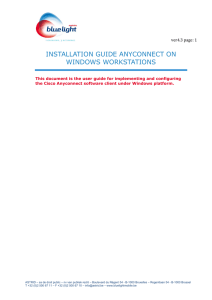Workshop 2 - JC Blaise
advertisement
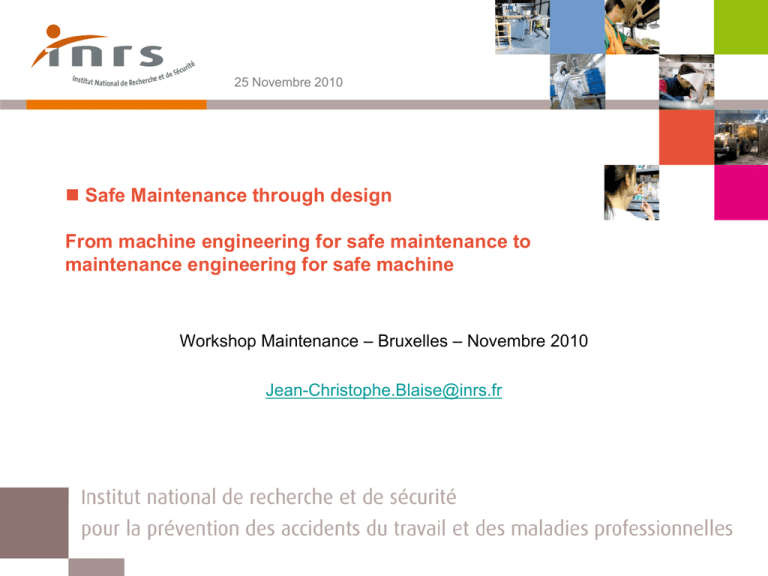
25 Novembre 2010 Safe Maintenance through design From machine engineering for safe maintenance to maintenance engineering for safe machine Workshop Maintenance – Bruxelles – Novembre 2010 Jean-Christophe.Blaise@inrs.fr Maintenance & Design Contents From machine engineering… > Regular and normative framework: main requirements and recommendations > Main issues (accidents analysis) > Is « good » design enough? … to maintenance engineering > More than a « simple intervention »: a complete process Conclusion > Designer/ User Dialogue > Training 25/11/2010 Workshop Maintenance - Bruxelles 2 Machine engineering 1.1.2. Principles of safety integration: Machinery must be designed and constructed so that it is fitted for its function, and can be operated, adjusted and maintained without putting persons at risk when these operations are carried out 1.6. MAINTENANCE – > Adjustment and maintenance points must be located outside danger zones. It must be possible to carry out adjustment, maintenance, repair, cleaning and servicing operations while machinery is at a standstill > If it cannot be satisfied for technical reasons, measures must be taken to ensure that these operations can be carried out safely (see section 1.2.5) > Machinery must be fitted with means to isolate it from all energy sources. > Machinery must be so designed, constructed and equipped that the need for operator intervention is limited. > 1.6.5. Cleaning of internal parts 1.7. INFORMATION - 1.7.4. Instructions 25/11/2010 Workshop Maintenance - Bruxelles 3 Machine engineering 1.7.4.2. Contents of the instructions - Each instruction manual must contain: > (e) the drawings, diagrams, descriptions and explanations necessary for the use, maintenance and repair of the machinery and for checking its correct functioning; > (q) the operating method to be followed in the event of accident or breakdown > (r) the description of the adjustment and maintenance operations that should be carried out by the user and the preventive maintenance measures that should be observed; > (s) instructions designed to enable adjustment and maintenance to be carried out safely, including the protective measures that should be taken during these operations; 25/11/2010 Workshop Maintenance - Bruxelles 4 Machine engineering No specific safety of machinery standard relative to maintenance (maintainability) EN ISO 14122: Permanent means of access to machinery EN 547-1: Human body measurements French standard: NF X 60-301 : Guide for taking into account criteria for maintenability of durables for industrial and professionnal use EN 1037 – safety of machinery Prevention of unexpected start-up Reference standard on safety on machinery: EN ISO 12100 > Same recommendations than directive requirements 25/11/2010 Workshop Maintenance - Bruxelles 5 Machine engineering 3.3 maintainability (of a machine) > ability of a machine to be maintained in a state which enables it to fulfill its function under conditions of intended use, or restored into such a state, the necessary actions (maintenance) being carried out according to specified practices and using specified means 4.11.9: Control mode for setting, teaching, process changeover, fault- finding, cleaning or maintenance 4.11.12 Provision of diagnostic systems to aid fault-finding > Diagnostic systems to aid fault finding should be included in the control system so that there is no need to disable any protective measure. NOTE Such systems not only improve availability and maintainability of machinery; they also reduce the exposure of maintenance staff to hazards. 4.15 Limiting exposure to hazards through location of the setting and maintenance points outside of danger zones 25/11/2010 Workshop Maintenance - Bruxelles 6 Machine engineering Analysis of 93 accidents of « repair » - Main « direct » risk-factors > Intervention when machine powered on: 76 % of accidents • • • machine fully operated : 40 % machine automatically started up : 25 % machine intentionally switched on : 25 % > Statutory safety devices missing: 41 % of accidents > Release of energy: 14 % > Deactivation of safety devices: 11% 25/11/2010 Workshop Maintenance - Bruxelles 7 EPICEA study OA Distribution/ EPICEA working phase Working Phase Reparing 30 Cleaning 30 Diagnosis 25 Testing 22 Jamming (Malfunction) 20 % Lubrication 14 15 Inspection 9 10 8 Re-commissionning 5 5 5 3 3 Setting 2 Undetermined 0 25/11/2010 Workshop Maintenance - Bruxelles 8 EPICEA study OA Distribution/ risks factors Isolation/lock-out missing Risks factors Maintenability Inadequate knowledge 35 Accessibility 31 Machine fully operates 30 Isolation/lock-out error 25 21 safety deactivation Coactivity 20 % 14 14 Devices missing 12 15 12 9 10 9 Undetermined 8 7 Intentionnaly start up 7 4 2 5 Automatically start up 1 Isolated Work 0 Equipment availability 25/11/2010 Workshop Maintenance - Bruxelles 9 Machine engineering Conclusion of OA analysis Intervention under energy Maintainability has to be improved Safety measures must be adapted to the intervention Integration at design stage to be prioritized It’s essential to identify intervention needs 25/11/2010 Workshop Maintenance - Bruxelles 10 Maintenance : high-risk activity? Ensure safety on energies 25/11/2010 Workshop Maintenance - Bruxelles 11 Maintenance : high-risk activity? Organize the activity 25/11/2010 Workshop Maintenance - Bruxelles 12 Maintenance : high-risk activity? Train operators 25/11/2010 Workshop Maintenance - Bruxelles 13 Maintenance : In reality ! Analyze, ? Estimate, Prevent Risks 25/11/2010 Workshop Maintenance - Bruxelles 14 Maintenance Engineering Not only consider the intervention on machinery Before intervening After intervening Each maintenance stage contributes to safe operation performance on work equipment 25/11/2010 Workshop Maintenance - Bruxelles 15 Maintenance generic Chart Process 25/10/2007 Sub-process External entity information Trigger Policy Management Assess need Machine Issue intervention request Produce Intervention request approved Policy Diagnose Schedule Observe symptoms and identify causes Diagnostic report Machine Prepare/schedule Identify intervention priorities Equipment Control stocks Prepare resources and schedule actions Actions to be performed Equipment Methods Intervene on equipment Isolate Equipment Conduct tests De-isolate Equipment Perform work Return to service Personnel Exploit results Actions performed Human 25/11/2010 resources REX database Gather Information Draft report Workshop Maintenance - Bruxelles Store information 16 Conclusion Thinking aimed at designers A machine must be designed such that it can be safely maintained without necessarily resorting to a maintenance operation under isolated conditions To optimize conditions under which a maintenance operation is performed > eliminate or limit it whenever possible through appropriate equipment design choices > integrate maintainability > analyze operating modes in relation to this maintenance operation based on zones, durations and the work to be performed > analyze and assess risks for each operating mode, > derive safety measures appropriate to this operating mode, > knowing that each technical solution has its limits, derive compensatory measures, if necessary, it is important to consider the consistency of adopted safety measures, depending on the type of operation: a solution retained for a maintenance operation can be incompatible with another operation. 25/11/2010 Workshop Maintenance - Bruxelles 17 Conclusion Concerning designers: difficulties to forsee some « specific » modes: process observation Concerning users: difficulties to anticipate some intervention: breakdown, spare parts… Information have to be shared : dialogue - specification formalisation Operators training > Before putting machine into service > During the life of the machine (changes) > drawings and diagrams available and up to date !. 25/11/2010 Workshop Maintenance - Bruxelles 18 Safe maintenance is making progress 25/11/2010 Workshop Maintenance - Bruxelles 19
